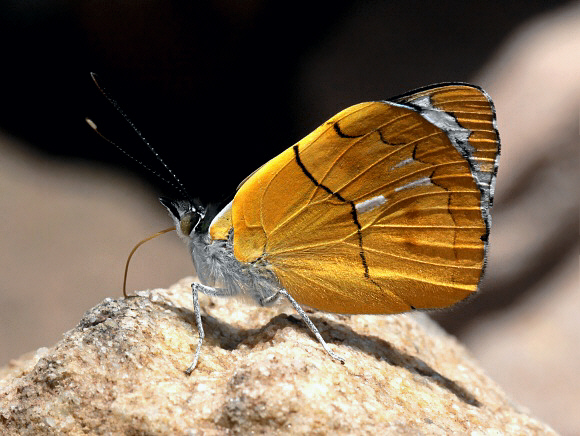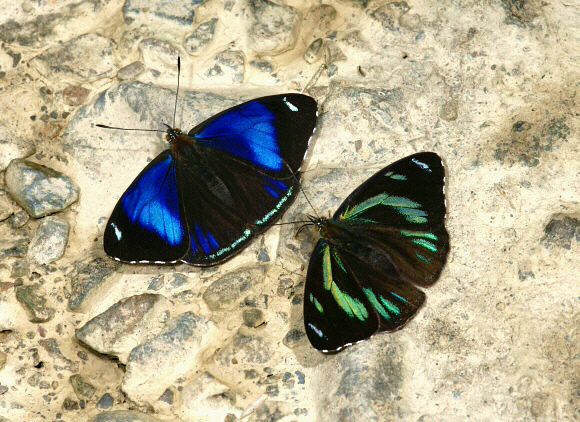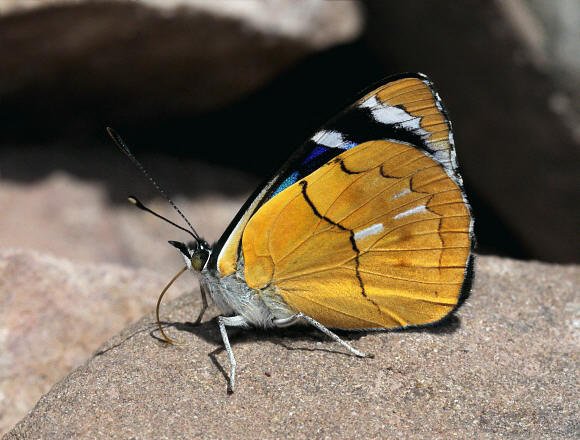 Perisama philinus philinus Huanuco, Peru – Adrian Hoskins
Perisama philinus philinus Huanuco, Peru – Adrian Hoskins
Introduction
The Biblidinae are recognised by their diverse but simple and colourful patterns. In the neotropics their representatives include the Callicorina – a subtribe of small-medium sized butterflies, marked on the uppersides with bands of metallic blue or green. The Callicorina includes the genus Diaethria, instantly recognised by the 88 or 89 markings on the undersides, and Perisama, which are similar on the uppersides, but have plain undersides marked only with dots and wavy lines.
The genus Perisama comprises 32 known species. They are medium-sized butterflies with blackish uppersides, marked with diagonal bands of turquoise or green on the forewings. Many species also have a band of the same colour around the hindwing margins. Perisama species are found mostly in the Andean cloudforests at altitudes between 1200-2400m, but there is also a species endemic to Costa Rica, and another endemic to Mexico.
Perisama philinus occurs in Ecuador, Peru and Bolivia.
 Perisama philinus philinus ( left ) with P. tristrigosa ( right ) Manu, Peru – Adrian Hoskins
Perisama philinus philinus ( left ) with P. tristrigosa ( right ) Manu, Peru – Adrian Hoskins
Habitats
This species is found on the eastern slope of the Andes, at altitudes between about 1400-2200m.
Lifecycle
The lifecycle of this and all other Perisama species appears to be unknown.
 Perisama philinus philinus Huanuco, Peru – Adrian Hoskins
Perisama philinus philinus Huanuco, Peru – Adrian Hoskins
Adult behaviour
As with other Perisama species, the butterflies spend the early mornings settled high in the trees, but at about 0900hrs they suddenly become very active, dashing back and forth between the tree tops and periodically dropping down to imbibe moisture from damp road surfaces and rocks.
Perisama species are most commonly encountered close to habitations, attracted by animal urine on road surfaces and around buildings. Males often aggregate in small numbers on bridges in forested areas.

Perisama philinus philinus Huanuco, Peru – Adrian Hoskins
